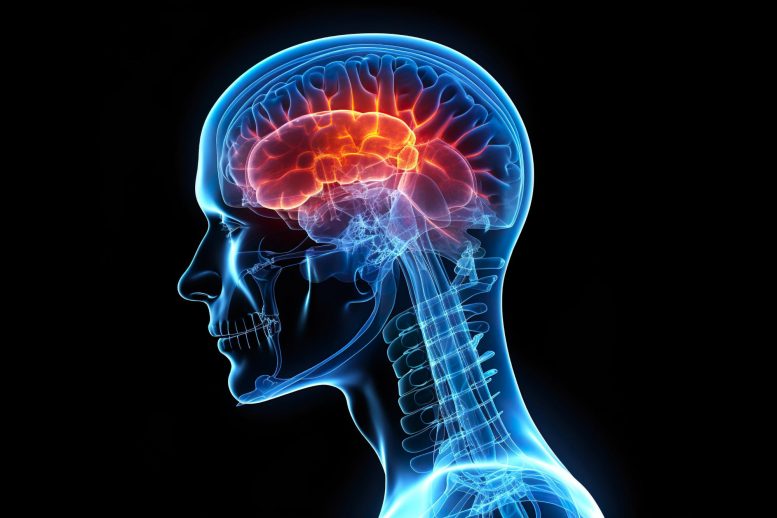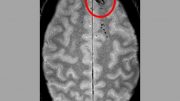
A new study shows traumatic brain injuries affect the entire brain, not just the injury site, altering how brain regions communicate and adapt to tasks. This insight into brain plasticity opens new avenues for targeted treatment and rehabilitation, with further research planned to explore long-term changes and intervention strategies.
Researchers at the School of Medicine at Tufts University have developed a new imaging technology that captures neuronal activity across the entire brain during the initial weeks of recovery.
Scientists at Tufts University School of Medicine have recently reported in the journal Cerebral Cortex that a head injury severe enough to impact brain function, like those resulting from car accidents or unexpected falls, can cause changes in the brain that extend beyond the initial impact area. Through research conducted on an animal model of traumatic brain injury, the team discovered that the brain’s two hemispheres collaborate to create new neural connections, aiming to replace the ones that were damaged.
“Even areas far away from the injury behaved differently immediately afterward,” says first author Samantha Bottom-Tanzer, an MD/PhD student in neuroscience at the School of Medicine. “Traumatic brain injury research tends to focus on the region of injury, but this study makes a good case that the entire brain can be affected, and imaging in distal regions can provide valuable information.”
Bottom-Tanzer and colleagues are the first to use an imaging technique combining fluorescent sensors of neuronal activity and electrodes to record how many parts of the brain talk to each other after a brain injury. The team tracked neural activity in mice for up to 3 weeks post-injury during periods of exercise and rest.
Changes in Brain Functionality
While overall neuron-to-neuron connectivity decreased after brain injury, all the mice could use an exercise wheel as normal. However, the activity of injured brains throughout both periods of running and rest was remarkably different from healthy brains. Surprisingly, they did not display distinct brain wave patterns when they were moving versus when they were still, which is what the researchers would have expected.
“Whether paying attention or walking, brains switch states depending on the task you’re doing,” says senior author Chris Dulla, professor and interim chair of neuroscience at the School of Medicine. “After traumatic brain injury, this ability is not as robust, indicating such events are impairing how the brain switches states in a way that we don’t yet understand.”
“What we can see from the data is that the brain has new solutions for how to do all these complex tasks,” he adds.
Clinical Implications and Future Research
This plasticity has clinical implications. Traumatic brain injuries often lead to long-term health problems and kill tens of thousands of Americans each year, reports the Centers for Disease Control and Prevention. The researchers predict that imaging a patient’s brain as they carry out various activities could better pinpoint how somebody might be injured or which functions are impacted, enhancing an individual’s treatment.
“This study underscores the complexity of how injury affects a dynamic and always-changing brain,” says Bottom-Tanzer. “Most people think of the brain in one state, but our data indicates there are fluctuations, and it might offer opportunities to explore different interventions for physical therapy, speech therapy, and more.”
Going forward, Bottom-Tanzer, Dulla, and colleagues plan to research changes in neural activity following traumatic brain injury for an even longer post-recovery period. They will also explore how their imaging technology can be used to identify changes in brain activity that may translate to specific types of dysfunction or correlate with long-term outcomes of disease.
Reference: “Traumatic brain injury disrupts state-dependent functional cortical connectivity in a mouse model” by Samantha Bottom-Tanzer, Sofia Corella, Jochen Meyer, Mary Sommer, Luis Bolaños, Timothy Murphy, Sadi Quiñones, Shane Heiney, Matthew Shtrahman, Michael Whalen, Rachel Oren, Michael J Higley, Jessica A Cardin, Farzad Noubary, Moritz Armbruster and Chris Dulla, 13 February 2024, Cerebral Cortex.
DOI: 10.1093/cercor/bhae038
The study was funded by the American Epilepsy Society, the U.S. Department of Defense, and the National Institute of Neurological Disorders and Stroke.









Be the first to comment on "The Hidden Consequences of Brain Trauma: Study Uncovers New Insights"